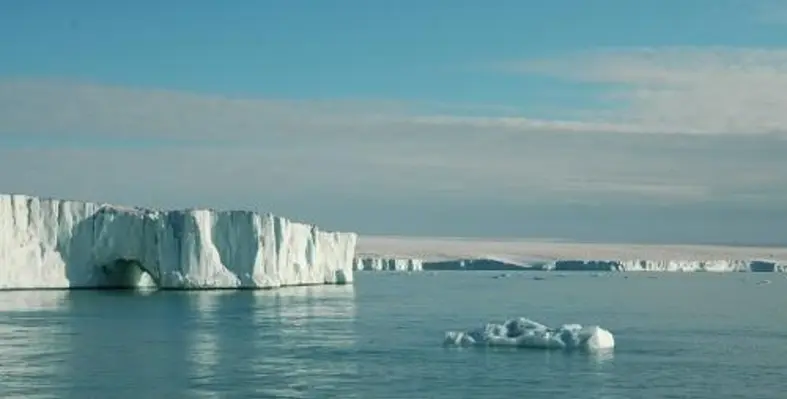Capturing melting icebergs off Antarctica to overcome drought in southern Africa is taking a step closer to reality
Captain Nick Sloane, who famously refloated the Costa Concordia, is pioneering the idea of capturing icebergs from Gough Island and guiding them towards Cape Town.
As incredulous as it sounds, it has caught the South African government's attention as well as the scentific and academic community, who will be attending a special seminar on Monday to discuss the matter further.
If the operation is successful, it has the potential to meet at least 25 per cent of the city's water needs - the same amount of water as the Steenbras Lower Dam - which would be welcome news after it suffered the worst drought in its history earlier this year.
"If there is one place on earth where all the factors are in your favour, then it is to take an iceberg from Gough Island and bring it to the Cape," said Sloane.
He says once the 80-100 million tonne iceberg is captured with a geotextile insulation 'skirt', it will be guided by a large tanker with the support of two tugs, into the Benguela Current, which passes the Western Cape and Namibia.
"A year ago, people thought we were crazy, but we have been liaising with glaciologists in Norway, such as Dr Olav Orheim and French engineering expert, George Moughin. They have been studying icebergs and glaciology for the last 40 years, specifically the southern ocean currents and the passage of icebergs, as well as the structure and geology of an iceberg and how to harvest and preserve it."
More than 2,000 billion tonnes of icebergs fracture off Antarctica every year and around 140,000 icebergs drift around the southern oceans and melt. It is expected that one iceberg could deliver on average 130 million litres a day for a year.
He stressed that the challenge over the past 38 years has been the lack of knowledge on the southern ocean currents and where the icebergs are, but now with the ability to track them via satellites, these challenges are slowly being phased out.
"The currents will do 90 to 95 per cent of the work to get into Cape Town," he continued. "Then we will use a milling machine to get a natural melt rate of about 60 million litres a day on top of the tabular table iceberg. The milling machine will create a slurry and add another 50 to 100 million litres to that. This will then be pumped into the waiting tankers."
His proposal now will be discussed by the national and local governments at a seminar on 10 September hosted by the South African Water Research Commission along with a host of interested parties to discuss the potential of harvesting southern icebergs as a viable alternative water source.

He said, "There will be the Department of Water and Sanitation, climatologists, water hydrologists and an academic and scientific review of the whole topic to see what the merits and risks are. We have to present to the government and discuss what the price of delivering the water would be, which we estimate to be between 5-5.5 South African cents a litre."
Sloane says he already has investors on board for the US$130mn to US$150mn project, one of which is Water Vision, and adds that if the city or the government agrees to take the melting water it would trigger further investment.
One of the possible locations where they could tap into the local infrastructure would be at Melkbosstrand, 35km north of Cape Town.
He said, "We are looking at a Single Buoy Mooring which is used all around the world with tankers for petroleum products. We are still looking for a suitable location where we can tap into the infrastructure, possibly off Melkbosstrand, where we would put a buoy offshore, alongside that location and then tap into the undersea pipeline to access the shoreside grid."
"We revitalised the idea three years ago, mainly to see how we can avoid Day Zero," he added. "One iceberg will give between 20 to 25 per cent of the city's daily consumption and that would be enough to avoid Day Zero. It is not to replace what the city is already doing but if the resource is there, drifting in and out of the southern ocean and melting, we are capturing what is already in the sea."






